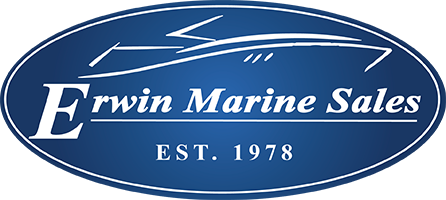Chickamauga Lake: Marinas, Dining, and Must-See Boating Destinations
For anyone boating on Chickamauga Lake or the Tennessee River, understanding channel markers is essential. These navigation aids serve as your visual compass on the water, guiding you around hazards, through safe passageways, and ensuring an enjoyable, incident-free day on the lake.
Whether you’re captaining a luxury Cobalt, cruising in a Sea Ray, or enjoying a relaxing day on a rented pontoon from Erwin Marine Sales, knowing how to read and respond to channel markers helps keep your family and guests safe—and your investment protected.
The Purpose of Channel Markers: Navigational Guardians of the Water
Channel markers are like the road signs of the water. Their purpose is straightforward yet vital: they indicate the edges of safe channels, direct traffic flow, and warn of hidden dangers like shallow areas, submerged rocks, or other obstructions beneath the surface. On Chickamauga Lake, where underwater terrain and shifting depths can pose navigational challenges, these markers are essential tools. They work in concert with GPS and depth finders to create a comprehensive safety net for boaters.
Each marker uses a system of colors, shapes, numbers, and lights to communicate its message. Red and green markers—part of the lateral marking system—show the port (left) and starboard (right) sides of the channel, respectively. As you return upstream toward Chattanooga, remember the rule: “Red, Right, Returning.”
Types of Channel Markers: Buoys, Beacons, and Daymarks Explained
Channel markers fall into two broad categories: buoys and beacons. Understanding the difference helps boaters know what to expect and how to react.
Buoys are floating markers anchored to the lakebed. They may be cylindrical (“can” buoys) or conical (“nun” buoys), with distinct shapes and colors to convey meaning. Many are equipped with lights or bells to increase visibility in low light or fog. On Chickamauga Lake, you’ll spot them near narrow channels or open water transitions.
Beacons, on the other hand, are fixed structures—typically poles or towers attached to the shore or submerged base. Some have lights (called lighted beacons) while others use daymarks—colored signs or symbols visible in daylight. Red triangular daymarks and green square daymarks mimic the messages of their buoy counterparts, reinforcing navigation cues.
Many markers also include topmarks—simple shapes like cones, spheres, or crosses—mounted above to help boaters identify them from a distance. Whether floating or fixed, each marker plays a unique role in safe passage and orientation, especially in tricky stretches of Chickamauga where channels wind through tight coves or shallow flats.
Interpreting the IALA System: What Every Boater Needs to Know
The channel marker system on Chickamauga Lake follows IALA Region B, the standard used in the Americas. This globally standardized system ensures consistency from coast to inland waterway.
Here’s what it means for you:
Red markers (nun buoys or triangular daymarks) indicate the right side of the channel when heading upstream (toward Chattanooga).
Green markers (can buoys or square daymarks) indicate the left side of the channel under the same condition.
Markers are also numbered. Even numbers on red markers, odd numbers on green ones. The numbers increase as you move upstream, helping confirm you’re headed in the right direction. Light patterns on markers further distinguish them. Flashing lights may indicate a sharp turn or hazard. On nighttime cruises or early morning outings, these signals are especially important. Reflective strips help identify markers after dark when lights may not be visible until you’re close.
When used together the shapes, colors, lights, and numbers form a layered communication system designed to keep you confidently on course, regardless of visibility or lake conditions.
Practical Tips for Navigating Channel Markers on Chickamauga Lake
Understanding theory is important, but applying it effectively on the water is where safety and confidence come together. Here are a few key practices to follow:
Use a Nautical Chart: Channel markers correspond with charts of Chickamauga Lake, helping you anticipate upcoming changes in depth or direction. Don’t rely solely on GPS—charts give you the big picture, including underwater hazards not always detected digitally.
Stay Between the Markers: Keep your vessel between the red and green markers when navigating a channel. In narrow passages, this is especially critical to avoid shoals or submerged obstacles.
Watch for Isolated Danger Marks: These are usually black and red with two black balls on top. They indicate a specific hazard you should give wide berth to—often seen near rock outcroppings or wrecks.
Be Cautious Near Docks and Marinas: While Chickamauga Marina and Erwin Riverfront Marina are equipped with easy docking options, always slow down and respect posted speed zones near channel marker clusters in these busy areas.
Mind the Current and Wind: Buoys can drift slightly with strong current or wind. Don’t hug them too closely. Stay mid-channel whenever possible and give yourself room to maneuver.
Channel Markers and the Boating Experience
Channel markers might not get the spotlight like luxury upholstery or high-horsepower engines, but they’re foundational to the boating lifestyle. They make your time on the water smoother, safer, and more enjoyable. At Erwin Marine Sales, we believe education is part of the boating experience. Whether you’re shopping for a new Sea Ray or renting a Harris pontoon for a weekend getaway, we want every captain to feel confident navigating Chickamauga Lake.
So the next time you pass a red or green marker, remember—it’s more than a buoy. It’s a guidepost ensuring you reach that quiet cove, scenic overlook, or lakeside dinner spot with ease.
